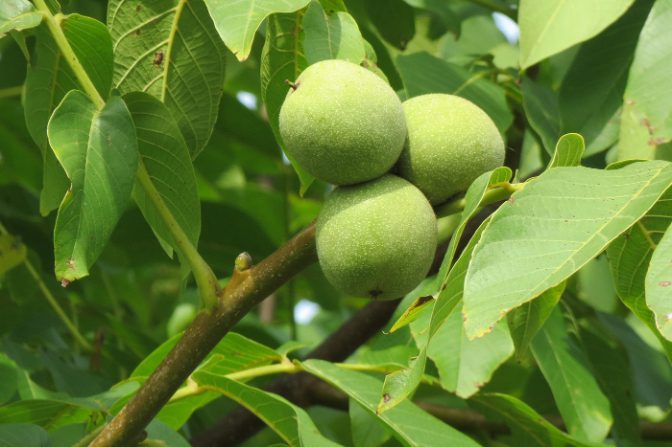Juglans regia | Common Walnut | English Walnut
The Juglans regia, native to south east Europe and south west China, was introduced to the UK by the Romans. This is a deciduous tree with a broad, wide-spreading crown and short trunk. In late spring to early summer, green, pinnate leaves with 5-9 paired leaflets appear. These leaves differ from the Juglans nigra as there are fewer of them, and they are more oval in shape, and smooth with un-toothed edges. The Juglans regia leaves turn golden-yellow in Autumn. The bark is smooth and olive green when young, turning silver-grey with maturity. Has male, yellow catkins, 10cm long and small clusters of 2-3 inconspicuous flowers that develop into fruit with a green fleshy husk and brown wrinkled walnut, late summer and autumn. The walnuts are edible and an excellent source of nutrients, in particular proteins and essential fatty acids. They are a favourite with squirrels and other mammals. However, the tree will not start producing Walnuts until it is 15 years old. The Juglans regia will grow in any well-drained soil and tolerates exposed positions, although it prefers full sun. This is a classic specimen tree.

Walnut trees were originally grown in the UK for their nuts, although later the timber became highly sort after to make rich veneers for antique furniture. Walnut has a wide variety of medicinal qualities; the leaf is used in the treatment of: swelling of the skin, acne, ulcers, diarrhoea and excess sweating. And, the nuts are said to help lower cholesterol, while the shell is used in the treatment of blood poisoning. The botanical name, English Walnut, Juglans regia, means 'Royal nut of Jupiter'






